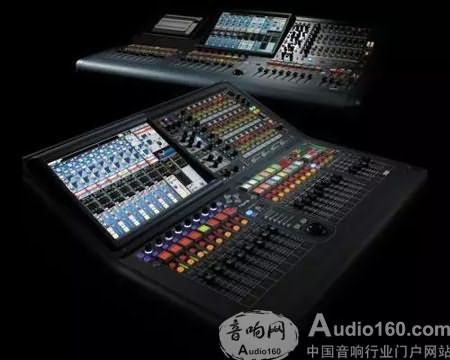A mixer, no matter how simple, high-end and low-end, to fully play the performance, you must master the mixer's skills and tuning experience. Here are some aspects that must be noted.

First, avoid pressing buttons and adjusting various knobs
Although there are simple and complicated mixers, the number of channels (number of channels) is more or less. In the case that we are not familiar with the sound station or do not understand the field system connection and the use requirements, it is forbidden to press the buttons and adjust the various knobs.
The mixer is the core equipment of the sound system. Different systems have different connection methods. When the system is commissioned, the relevant knobs are already in working condition. If we rush and press, it will destroy the working state and light. The effect is destroyed, and the heavy one may cause silent and system equipment damage.
Second, avoid tuning the channel gain knob
Each input channel of a typical mixer has a gain selection button (with 20 attenuation and attenuation) and a gain adjustment knob. The purpose of these two buttons is to control the size of the audio signal entering the channel. If the signal is too large, the input amplifier will be saturated, and the audio signal will be seriously distorted. If the signal is too small, the sound will be light or the signal-to-noise ratio will be reduced, which will affect the sound reinforcement effect. Never adjust the channel gain knob. The correct approach should be: select the gain selection button based on the type of input signal. There are two options for this button. If pressed, it will attenuate 20-30dB (depending on the mixer); if it is not pressed, it will not decay. When we input the microphone type signal (the size of this type of signal is usually a few millivolts), we do not need to press the attenuation button; when we input the line level signal (such as DVD, deck, etc., the size of this type of signal is generally For 100-200 millivolts, you must press the fade button. In the second step, adjust the gain adjustment knob to the correct position. When the PEAK indicator is bright or steady, the knob is turned 5-10° counterclockwise (one tick mark).

Third, avoid using or using parametric tone controller
The general mixer has a 3- or 4-parameter pitch controller with 6 or 8 knobs. These knobs are divided into two categories: one is gain control, labeled -10 to +10, and the other is frequency knob, which selects the frequency of boosting or attenuating according to the needs of the site. The adjustment of these knobs requires a certain tuning experience. In the case of unfamiliar or lack of tuning experience, please do not arbitrarily adjust these knobs, especially the gain button, which is generally at “0â€. But also against it, no matter what the case, do not use the parametric tone controller, this is not a display?
Fourth, avoid paying attention to the sound image adjustment button
In each input channel of the mixer, the pan adjustment button PAN is set, and L or R is marked. When the knob is rotated to the L position, the signals of the channel are all transmitted to the L channel output. When it is rotated to R, it means that all the signals of this channel are transmitted to the R channel output. When it is in the middle position, it means that the L and R channels of this channel have outputs. According to the general sound reinforcement requirements, when the microphone does not emphasize the sound image position, the PAN is in the middle position, as a stereo signal input (such as DVD, deck, etc.) and the system is a two-channel sound output form, if two inputs are used. For the channel, the PAN of one channel is at L, and the PAN of the other channel is at R. Do not blindly adjust the tone. The stereo input channel has the balance knob in the middle.
Five, avoid paying attention to the auxiliary output knob
Each input of the mixer is equipped with an adjustment button AUX for the size of the auxiliary output signal, which has 5 or 6 channels, and 3 or 4 channels for less. These knobs should be in different positions depending on whether the mixer is finally using the auxiliary channel, and should not be used or not in the closed position, or in the middle position (people are used to placing the knob that is not known to be used in the middle position). ).
In fact, the use of the mixer is very flexible, different systems, different use occasions, have different usages, the same is true for the auxiliary channel, some are connected to the auxiliary speaker output, some are connected to the effect input, and some are given to other devices. As a signal input, if you don't understand it, put it in the "off" position or in the middle position, why not?
Here, we must talk about the problem of the auxiliary output channel connected to the effect. As we all know, the effect is mainly to increase the effect of the human voice. When playing music, there is no need to apply effects, plus the effect of only destroying the music, reducing the reduction of clarity. This requires that the auxiliary channel knobs be turned on and the auxiliary channel knobs to be turned off according to the effector connection, and corresponding to the several auxiliary outputs.

Six, avoid paying attention to the coordination of the split volume fader and the main output volume fader
Both the split volume fader and the main output volume fader can control the size of the mixer output, but how to use it is elegant.
Generally, for the split volume fader, we need to open the output VU meter of the way. When the split volume fader is in the 0dB position, adjust the gain selector button and the gain adjustment button of the way to make the VU meter or the illumination state of the monitor state. When the diode is at 0db, it can be (if the LED is displayed, the area where the yellow light is bright). The roads are basically the same, and then according to the requirements of the live sound reinforcement, adjust the main output volume fader to the appropriate state, and avoid pushing the matter casually, so that the dynamic range of the signal is minimized and the signal-to-noise ratio is the highest.
Seven, avoid not closing the unused volume faders in time
The volume fader for each shunt corresponds to the input signal of that way. When the road is not in use, that is, after the speech ends or the music signal stops, the volume fader of the road should be turned off in time to avoid picking up useless sound and feeding it to the sound reinforcement system through the mixer.
This aspect is the need for tuning. Because the volume fader is not turned off in time, the surrounding interference sounds are played out without selection, which affects the sound quality. At the same time, since the microphone is not used by the speaker, it is often pushed away from the speaker, and its use angle changes. It is easy to produce sound feedback and whistling; on the other hand, it is also to respect people's needs. Since the volume fader is not turned off in time, the contents of some private conversations on the podium are played out, which may cause misunderstandings and jokes.
Therefore, you should develop the habit of turning off the volume fader of the unused mixer input channel in time, and avoid pushing things away.
Eight taboos open phantom power switch
Phantom power is usually set on the mixer, which is mainly when a condenser microphone is used.
This phantom power is generally controlled by the main switch and the shunt switch, pressed to open, and then pressed to close. Its voltage is 48V, and it is also 15V or continuously adjustable. According to the requirements of the use of condenser microphones.
The phantom power is applied directly to the condenser microphone via the microphone cable (in the balanced connection, via 2+ 3-). For this reason, we can only turn on the phantom power when using a condenser microphone and the balanced connection. In other cases, it should be confirmed that it is off. Otherwise, it will cause the microphone to be silent and cause trouble, or cause the phantom power supply to malfunction.
Through the above introduction to the use of eight aspects of the console, I believe that you have mastered the main use of the mixer. The number of tubes in a mixer is not the same as the number of auxiliary functions. The principle of use is the same. Therefore, knowing the above eight taboos can make the console play more roles.
Overmolding the Connectors offers significant opportunities for cable improvements with higher pull strength and waterproof issue for those parts, which without these characteristic by conventional types.Such as jst jwpf connector. Just be free to contact us if you need any wire-harness solutions or partner for your products. Our professional and experienced team would support you by satisfied skill and service.
Molded Connectors,Molded Waterproof Connector,Molded Straight Wire Connector,Jst Jwpf Connector
ETOP WIREHARNESS LIMITED , http://www.oemwireharness.com